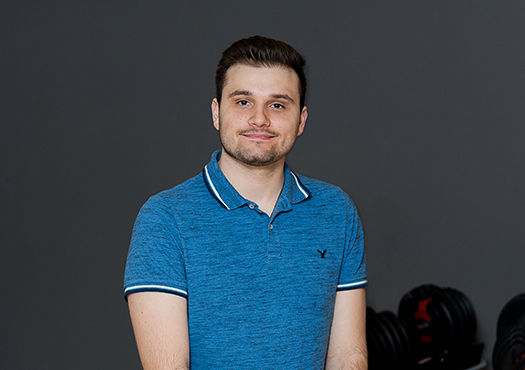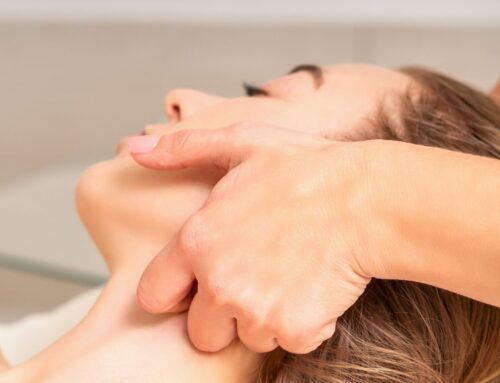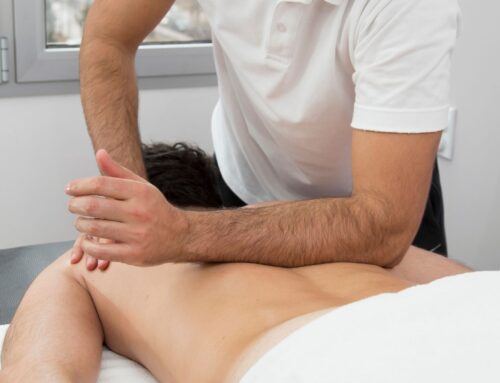Swedish massage was developed in the 19th century as a comprehensive system of therapy aimed at improving circulation, relieve muscular tension and promote relaxation. With further development and studies on the benefits of Swedish massage therapy, we know much more about its effects and suitable applications today.
At Propel Physiotherapy, our registered massage therapists use Swedish massage therapy to treat a number of specific conditions, as well as to promote overall well-being. This article explores the origins and benefits of Swedish massage, as well as fundamental techniques, and conditions treated with this type of classic massage.
Table of Contents:
- What is Swedish massage?
- History of Swedish massage
- Benefits of Swedish massage
- Swedish massage techniques
- Swedish massage application and adaptation
- Conditions treated with Swedish massage
- Conclusion
What is Swedish Massage?
Swedish massage, a widely popular massage therapy technique, is renowned for its ability to promote relaxation, alleviate muscle tension, and enhance overall well-being. Swedish massage involves both passive and active movements of joints as well as both firm and light pressure. The varying pressure used differs it from other forms of massage. Swedish massage works to improve blood flow, reduce tension in muscles, and enhance the flexibility of muscles and joints.[i]
You may also enjoy reading: The Benefits of Myofascial Release Massage
History of Swedish Massage
Swedish massage finds its roots in the pioneering work of Per Henrik Ling, a physical education pioneer of the early 19th century. Combining his knowledge of anatomy, physiology, and gymnastics, Ling devised a comprehensive system of therapeutic massage that aimed to improve circulation, relieve muscular tension, and promote relaxation.[ii] It was further developed by Johann Georg Mezger, a Dutch physician, whose therapeutic approach has evolved into a cornerstone of the modern spa and wellness industry.[ii] The term “Swedish massage” gained popularity in the early 20th century when this technique was introduced to the United States.
You may also enjoy reading: What is Deep Tissue Massage
Benefits of Swedish Massage
Swedish massage, also known as classic massage, is a popular form of therapeutic massage that originated in Sweden. It involves the use of various techniques to relax muscles, improve circulation, and promote overall well-being. Here are some benefits commonly associated with Swedish massage.
- Relaxation: Swedish massage is known for its ability to induce deep relaxation. The techniques used, such as long, gliding strokes and kneading, help to calm the nervous system and release physical and mental tension.
- Stress reduction: The soothing nature of Swedish massage can significantly reduce stress levels. It stimulates the release of endorphins, which are natural mood-boosting chemicals in the body, helping to alleviate anxiety and promote a sense of well-being.
- Pain relief: Swedish massage can be effective in providing sensory input that relieves the feelings of muscular tension. The techniques applied to the muscles help to increase blood flow, and improve feelings of relaxation, which can lead to pain relief.
- Improved circulation: The long, flowing strokes used in Swedish massage help to increase blood circulation throughout the body. This enhanced circulation promotes the delivery of oxygen and nutrients to the muscles and organs while aiding in the removal of waste products from the tissues.
- Increased flexibility and range of motion: By targeting the muscles and connective tissues, Swedish massage can improve flexibility and enhance joint mobility. The techniques used, such as stretching and kneading, can help to release tension and improve muscle elasticity.
- Detoxification: The increased circulation and lymphatic flow stimulated by Swedish massage can facilitate the removal of toxins from the body. This can help to improve overall health and promote a sense of rejuvenation.
- Enhanced immune function: Studies have suggested that Swedish massage can boost the immune system by increasing the activity of white blood cells and promoting lymphatic flow.[iii]
- Improved sleep quality: Swedish massage promotes relaxation and reduces stress, which can contribute to better sleep. It can help regulate sleep patterns, improve sleep quality, and alleviate sleep disorders.
It’s important to note that individual experiences may vary, and Swedish massage may not be suitable for everyone. If you have any specific health concerns or medical conditions, it’s best to consult with a qualified massage therapist or healthcare professional before receiving a Swedish massage.
You may also enjoy reading: Myofascial Trigger Points and Back Pain
Swedish Massage Techniques
Swedish massage encompasses a range of techniques that work together to create a harmonious and effective treatment. The therapist employs five fundamental strokes: effleurage, petrissage, friction, tapotement, and vibration.
- Effleurage involves long, gliding strokes using the palms, fingertips, or forearms, designed to warm up the muscles and establish a connection between the therapist and client.
- Petrissage utilizes kneading, squeezing, and rolling motions to release tension and improve circulation.
- Friction involves deep circular movements applied with the fingertips or thumbs, targeting specific areas of tension.
- Tapotement employs rhythmic tapping or percussive movements, promoting invigoration and stimulating the muscles.
- Vibration involves rapid shaking or trembling motions, which can further relax the muscles and enhance blood flow.[iv]
Swedish Massage Application and Adaptation
Swedish massage can be customized to meet the specific needs and preferences of each individual. Therapists can adapt the pressure, pace, and intensity of the strokes based on the client’s comfort level and desired outcomes. This versatility allows Swedish massage to cater to a wide range of individuals, from those seeking relaxation to individuals with various orthopaedic and neurological conditions.
You may also enjoy reading: Thai Massage Services
Conditions Treated with Swedish Massage
Swedish massage can be used to treat a number of conditions including rheumatoid arthritis, osteoarthritis, multiple sclerosis and chronic neck pain. In this section, we’ll take a look at how Swedish massage can be used to treat all of these conditions.
Rheumatoid Arthritis
Rheumatoid arthritis (RA) is defined as a systemic, idiopathic, inflammatory, and autoimmune disease.[i] The most common age of onset is between 40 and 50 years old and it affects women disproportionately more than men. In fact, women are three times more likely than men to develop RA. Various symptoms such as loss of joint function and chronic pain prompt individuals suffering from RA to seek and use medication. However, medicinal approaches can cause infection and gastrointestinal issues. A study was done to determine whether Swedish massage could be an effective treatment for rheumatoid arthritis. One group of participants with RA were treated with Swedish massage and the other remained untreated. The treatment group experienced significantly less pain both immediately following and one month after receiving the Swedish massage treatment. The experimental group also used less pain medications following the treatment.[i]
Osteoarthritis
Another study focused on determining whether Swedish massage is a helpful treatment for women with osteoarthritis (OA). Osteoarthritis is defined as a common chronic joint disease related to joint degeneration and focal cartilage loss, which can alter bone formation and joint tissue behavior.[v] Specifically, the study wanted to determine whether a 4-week treatment with Swedish massage could alleviate symptoms of knee osteoarthritis. The results revealed benefits related to pain as well as physical ability. Specifically, those that received 4 weeks of Swedish massage experienced less new pain and they were able to walk at faster speeds.[v]
Multiple Sclerosis
Multiple sclerosis (MS) is the most common inflammatory, autoimmune, demyelinating disease of the central nervous system and usually leads to physical and cognitive impairments. Typical onset occurs between the ages of 20-50 and the disease manifests more in women than men. Symptoms can include muscle weakness, numbness, spasticity and pain. Massage therapy can be an effective to manage the symptoms of MS. One systematic review found that massage was effective in managing symptoms of MS including fatigue, pain, anxiety and spasticity.[vi] This can contribute to an improved quality of life and improved function.
Chronic Neck Pain
Chronic neck pain is on the rise as more and more people in the workforce are spending their day at a computer. This puts postural strain on the muscles of the neck causing neck pain. Chronic neck pain is very common as it affects 16.7–75.1% of the world’s population annually.[vii] As a result, people experiencing neck pain also have sleep disturbances throughout the night resulting in poor sleep. One study set out to see whether Swedish massage alone or in combination with muscle energy techniques (METs) could be used to reduce neck pain and improve sleep. The researchers concluded that Swedish massage combined with METs was the most effective at improving sleep and reducing dependency on sleeping pills for people with chronic neck pain.[vii]
Conclusion
The benefits of Swedish massage therapy are numerous. It is an effective therapeutic practice for many neurological and orthopaedic conditions. Through its combination of soothing strokes, deep tissue manipulation, and physiological effects, Swedish massage can help promote relaxation, reduce muscle tension, improve circulation, and foster overall well-being.
Massage therapy can play an important role in a patient’s recovery. At Propel Physiotherapy our registered massage therapists work closely with our physiotherapists to help optimize and complement therapy that will best meet the client’s needs.
Our massage therapists have the knowledge and experience in working with complex neurological and orthopaedic demands. Come see how our massage therapists can help you in your recovery.
References
[i] Sahraei, F., Rahemi, Z., Sadat, Z., Zamani, B., Ajorpaz, N. M., Afshar, M., & Mianehsaz, E. (2022). The effect of Swedish massage on pain in rheumatoid arthritis patients: A randomized controlled trial. Complementary Therapies in Clinical Practice, 46, 101524.
[ii] Melnick, S. (2015). PER HENRIK LING – PIONEER OF PHYSIOTHERAPY AND GYMNASTICS. European Journal of Physical Education and Sport Science, 1(1), 1–6.
[iii] Rapaport MH, Schettler P, Bresee C. A preliminary study of the effects of repeated massage on hypothalamic-pituitary-adrenal and immune function in healthy individuals: a study of mechanisms of action and dosage. J Altern Complement Med. 2012 Aug;18(8):789-97. doi: 10.1089/acm.2011.0071. Epub 2012 Jul 9. PMID: 22775448; PMCID: PMC3419840.
[iv] Benson, E. (2019, October 17). Swedish massage – The Complete Guide. Massage Therapy School serving North Idaho and Spokane.
[v] Sabet, F., Ebrahimipour, E., Mohammadipour, F., Daneshjoo, A., & Jafarnezhadgero, A. (2021). Effects of Swedish massage on gait spatiotemporal parameters in adult women with medial knee osteoarthritis: A randomized controlled trial. Journal of Bodywork and Movement Therapies, 28, 521–526.
[vi] Heidari, Z., Shahrbanian, S., & Chiu, C. (2021). Massage therapy as a complementary and alternative approach for people with multiple sclerosis: A systematic review. Disability and Rehabilitation, 44(20), 5758–5769.
[vii] Hadamus, A., Wojda, A., & Białoszewski, D. (2021). Can the sleep quality of patients with chronic neck pain be improved by muscle energy techniques combined with Swedish massage? Complementary Therapies in Clinical Practice, 44, 101421.
Written by









